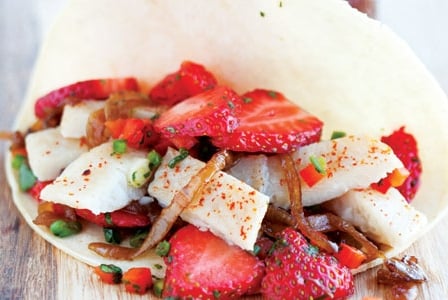
Next time you pop open a cool one, consider cooking with it rather than drinking it. Many types of beer add flavour to delicious dishes from tacos to brownies.
Adding flair and flavour to both sweet and savoury dishes, it’s surprising that beer has long played second fiddle to wine for cooking. With the craft beer boom and top billing on popular food shows such as Iron Chef, the humble libation is finally showing off its culinary wings.
Stews, breads, chilis, and even desserts can get a boost from the flavours various guises of beer deliver. The hops provide tempered bitterness, with the malt lending dishes a subtle sweetness.
Beer deconstructed
The beer in your mug or root vegetable stew is produced by mixing water, yeast, grain, and hops—a flowering plant responsible for beer’s bitter personality. Barley is the most common grain used, though wheat, or even sorghum for the gluten-free crowd, can be stirred in.
The amount of each of these ingredients, as well as the brewing methods employed, will influence the overall flavour.
Recipes
- Fish Tacos with Strawberry Salsa and Beer Caramelized Onions
- Black Bean Beer Chili
- Roasted Garlic Beer Bread
- Beer Braised Cabbage
- Double Chocolate Stout Brownies
Beer in the kitchen
Beyond “beer can” chicken, here are ways to put your meals on tap:
- Use beer to braise leeks, onions, or cabbage.
- Steam shellfish and poultry using a beer-infused liquid.
- Add beer to batters for brownies, quick breads, muffins, and other baked goods.
- Pour it into the simmering liquid for chili and stews.
- Add beer to marinades to help tenderize tougher cuts of meat.
Health at stake
Marinating your steak in beer for six hours can cut levels of heterocyclic amines—cancer-promoting compounds formed during cooking—by up to 88 percent, according to a Journal of Agricultural and Food Chemistry study. The malt and hops in beer contain antioxidants, compounds that appear to block the formation of these carcinogens.
Beer with benefits
Consider popping the top on organic beer. Conventionally grown wheat and barley contain pesticide residues that may end up in your pint. Buy organic and you’ll avoid the residues.
Beer rules
Rule #1: You’ve heard it said about wine and the same applies for beer: never cook with a beer you wouldn’t want to quaff on its own.
Rule #2: Beer can be substituted for part or all of the liquid—water, stock, or wine—in recipes. In general, use a darker beer as a stand-in for red wine and a lighter brew for white.
Rule #3: Sure you’ll trim a few calories, but calorie-reduced light beers often don’t have enough flavour to stand up to cooking.
Rule #4: As beer cooks and reduces, its sweetness tends to cook off with the water, pushing its bitter aspects to the forefront. Use heavily hopped, bitter beers such as India pale ale in strongly flavoured dishes, or add them toward the end of cooking to avoid unwanted bitterness. A beer style that is very lightly hopped is perfect for longer cooking applications such as braising.
Rule #5: Full-flavoured beers such as stouts and porters will have more impact on your dish, so a little goes a long way. Lighter lagers and pilsners can be used in greater quantities.
Experts at your local liquor store can help guide you toward the correct beer choices based on your recipe.
The beer primer
The right brewski can elevate a dish from station wagon to sports car. With endless flavours and aromas, the right beer can be found for practically any recipe. Before cooking with beer, however, you have to understand which style works best with your recipe.
Lager
Flavour: delicate and crisp with heavy carbonation
use for: poaching chicken or fruit, meat and seafood brines, bread batters, caramelizing onions
Pilsner
Flavour: light, crisp, and bready; slightly more bitter than a lager
use for: creamy soups, braising veggies such as cabbage, bread batters, pizza dough
Pale ale
Flavour: rich, with a dry, bittersweet finish
use for: cheese fondues, fish batters, meat and poultry marinades, stir-fries
India pale ale
Flavour: lots of oomph with lingering bitterness
use for: Mexican foods, marinating or braising rich meats such as game
Amber ale
Flavour: slightly sweet and woody with caramel notes
use for: braising meats, sauces for chicken, steaming shellfish such as mussels, gravies
Porter
Flavour: smoky and crisp with nutty or licorice undertones; lighter than stout
use for: barbecue sauces, beef or pork stews, chilis, glazes, baked beans, sautéed mushrooms
Stout
Flavour: roasty with chocolate and coffee notes; the darkest breed of beer
use for: chocolate desserts such as cakes and brownies, caramel sauces, chilis, ice cream floats
Wheat/Belgian white ale
Flavour: light and citrusy
Use for: poaching and steaming seafood, pancake and bread batters, broths
Fruit beer
Flavour: fruity and slightly sour
Use for: salad dressings, dessert sauces, crepe batters, fruit pies, poaching fish, chutneys and other preserves

